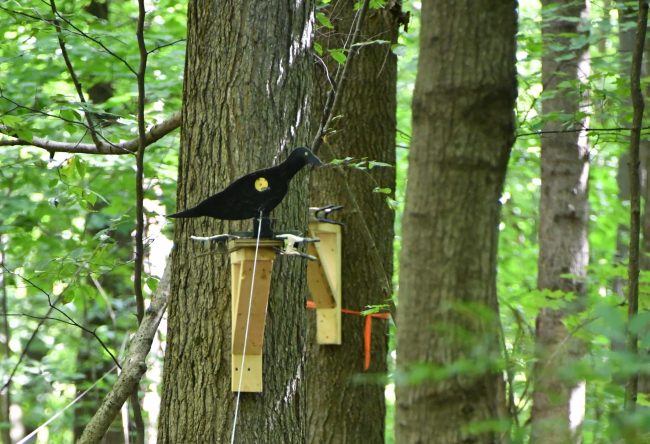Field Target is a great airgun pastime that will really challenge your shooting skills. The concept is to mimic various hunting shots on small game across a multitude of different shooting conditions. This article will examine some techniques you can practice to help improve your chances next time you are out hunting or testing your field target skills at a local match. Let’s get started.

You Need to Really Know Your Gear and the Process
To be truly successful at anything, you need to know your equipment and everything involved to make it perform as expected. Every aspect of the process needs to be second nature, from filling your field target air rifle with high-pressure air, to loading the mag, to cocking the action, to squeezing the trigger, to adjusting the scope (if allowed in your FT discipline). When the entire process can be completed automatically through basic muscle memory, it creates “headroom” for you to focus on the variables that you can’t control. The learning process takes a lot of time, repetition, and discipline. It’s time most casual shooters don’t put into their craft, and it’s why most reach a plateau in their skill level that they can never seem to overcome. To be truly great at anything has very little to do with natural talent and a lot more to do with time and commitment to the process.
How to Know Your Gear
Why is getting to know your gear so important? If your gear isn’t working correctly, you won’t be able to put the pellet into the kill zone. Let’s take a look at some basic tasks that every shooter needs to be able to know about their airgun.
You’ll want to start by shooting at a fixed location, probably off a bench. Learning how to fill your gun, load the mag, take the shot, etc., that’s all pretty easily learned after a few sessions. Pay attention to how the cocking lever feels when cocking the hammer and then seating the pellet. Learn to feel the distinctions in the trigger and the stages in the trigger pull, provided it’s a multi-stage trigger. Lastly, listen to the sound of the valve as the pressure drops below the reg and the sound of the reg recharging. There’s a general “knowing” of your gear that you’ll acquire through repetition and paying attention to every little distinction.
We test and shoot a lot of products here at AGD. Unfortunately, we never get the opportunity only to shoot one product and get to know it. With that said, we do have our personal favorites, and it’s interesting to “feel” when an airgun isn’t operating at peak performance. It may be a hitch when cocking the action or seating the pellet. It may be the sound of the valve releasing or the regulator recharging the plenum. Even the sound of the pellet slicing through the air can be a telltale sign of whether things are working as expected or of a potential issue. The bottom line is that the more time you spend really getting to know your gear, the better you’ll do when it matters the most.
Train Like You Shoot
We’ve discussed this in the past, but getting great accuracy while testing things at the bench is one thing. It’s a completely different story when the wind is blowing and you’re shooting in a forced standing position. This is where that “headroom” becomes so important. If you have to think about basic operational mechanics, then you won’t have the mental and physical capacity to process the real variables that come up shot to shot. So, force yourself to get out when things are less than optimal. Learn to read the wind at various distances and shooting positions until everything you do is second nature. The more time you put into this type of practice, the more prepared you’ll be at your next match. Many shooters only practice when things are perfect. The last time we checked, things were seldom perfect at every match. Shooters who put in the time and effort learning to shoot through difficult conditions will generally score a lot higher than those who don’t.
Have Fun
In the middle of all this extra trigger time, remember to have some fun. Once you’ve mastered knowing your equipment at the bench, consider setting up a field target course in your backyard. Having a private course close to home is certainly a decent way to keep things moving forward. You can increase the difficulty by using smaller kill zones and more challenging shooting positions. There are so many ways for you to make the whole process a lot of fun.
Let Us Know How It Goes
If you are new to Field Target and you’ve found this article useful, please let us know how incorporating some of these ideas has helped you improve. If you have some more ideas for us to share, please be sure to let us know in the comments. And if you have more questions about Field Target in general or the gear you need to compete, please don’t hesitate to reach out to us here at Airgun Depot. We are always here to help.
